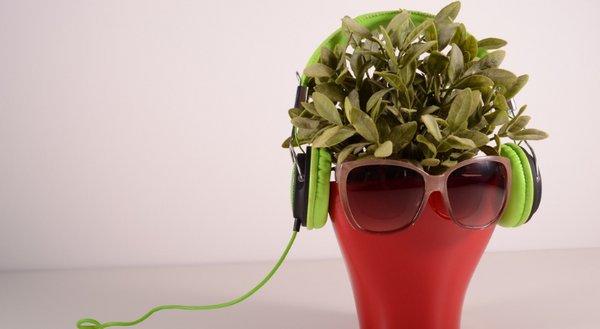
Growing food is not limited to outdoors in the summer.
With some planning, you can grow food indoors throughout the year.
Make a plan
Before starting your indoor kitchen garden, it is essential to think about what you want to gain by growing food indoors. You might wish to have herbs to give dinners a special touch or boost nutrition for added health benefits.
Here are some things to keep in mind: the amount of work you want to put into your indoor garden, schedules including your daily routine to time away, and whether your plants will be only indoors or transfer to outside during nice weather.
Environmental Conditions
The limiting factor for growing plants indoors is light. Three aspects of light must be considered when planning to grow an indoor garden.
The first is light intensity or brightness. Most plants grown for food need bright light. A south-facing window is a good location for natural light exposure for plants.
The duration of the light on the plant is another consideration. Many plants are sensitive to changes in the time they are exposed to light. Light duration affects their growth, flowering, and setting fruit. Supplemental light during the short days of winter will ensure the plants get light for the required time.
Plants also need times of darkness. A timer is a helpful tool to help you deliver the proper duration of light to your plants.
Light quality refers to the color of the light. In general, blue/ green light is required for plants to have healthy growth. Red/orange light is necessary for flowering and fruit. Sunlight has all the colors of light.
Supplemental light varies depending on the source. Fluorescent lights give off light in the blue spectrum. Incandescent light is in the red/orange spectrum and gives off heat. It is not essential to buy expensive lights for your indoor garden but to understand how to use light resources effectively.
Providing the proper amount of water is critical for your indoor garden. Check the soil for moisture to determine when to water. It is best to keep the soil profile consistently moist.
Too wet or too dry can cause stress to the plant.
Proper ventilation helps to prevent fungus and disease problems. Make sure air can move between your plants.
Sterile potting media is a good choice for an indoor kitchen garden. Using this type of soilless media starts your garden without worrying about disease or insect pests. Choose media that drains well to help plants thrive.
Pollination
Wind and insects pollinate food plants outdoors but are lacking in indoor spaces. Some plants can be pollinated by shaking them to mimic the wind, while others need to have the pollen transferred by hand to mimic insects.
Herbs: Five to try
Oregano, thyme, lemongrass, and chives thrive in bright light. These herbs do not tolerate overwatering—water when the top of the soil is dry. Growth can be slow during the winter, so harvest leaves sparingly until new leaves form.
Mints can tolerate less light and more water. Keep some on hand to add to teas or desserts.
Vegetables and fruits: Five to try
A variety of lettuce can be successfully grown indoors. Scatter seeds evenly across moist soil media and lightly cover. Lettuces thrive in cooler temperatures and need less light than other edible plants.
Microgreens are packed with nutrition. These delicate plants are best grown indoors where environmental conditions can be controlled.
Patio varieties of tomatoes and citrus trees can be grown in pots with bright light and moist soil. Keep in mind that these plants will need some help with pollination for fruit to form.
Alpine strawberries can grow well in a bright, cool space out of direct light. For fruit, hand pollination is necessary.
There are so many options for growing an indoor kitchen garden. Try one or more to have fresh, nutrient-filled food all year long.
MEET THE AUTHOR
Nicole Flowers-Kimmerle is a Agriculture and Natural Resources (Horticulture) Educator for Fulton, Mason, Peoria and Tazewell counties. She completed a bachelors of science degree in crop science at the University of Illinois, and a master’s of science degree in agronomy with an emphasis in weed science at the University of Wisconsin-Madison. She has also worked at Montana State University as a research associate where she worked on weed control in sugar beets and barley. She taught high school chemistry and other science classes where she was able to teach students in both the school garden and greenhouse. She works with both the Extension Master Gardeners and Extension Master Naturalists.
ABOUT THE BLOG
ILRiverHort is a blog that helps people connect to nature and grow.